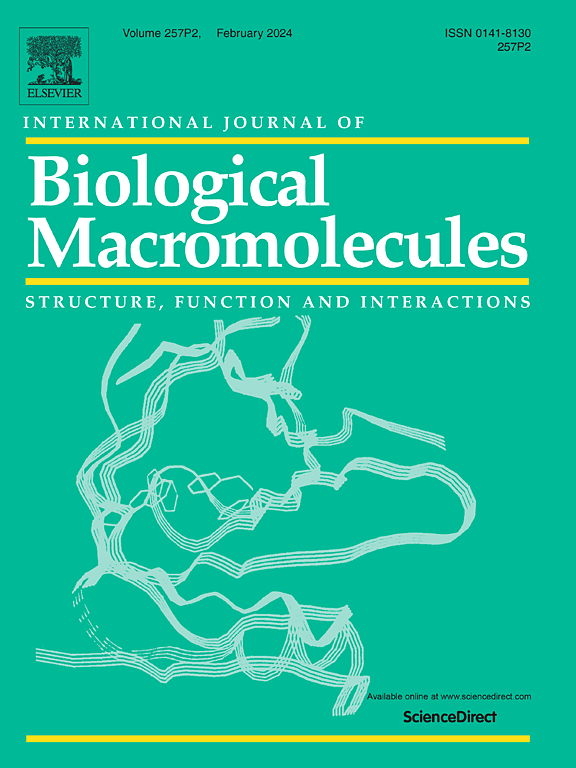N-doped porous carbon derived from different lignocellulosic biomass models for high-performance supercapacitors: the role of lignin, cellulose and hemicellulose
IF 7.7
1区 化学
Q1 BIOCHEMISTRY & MOLECULAR BIOLOGY
International Journal of Biological Macromolecules
Pub Date : 2025-02-01
DOI:10.1016/j.ijbiomac.2024.138815
引用次数: 0
Abstract
Biomass-derived porous carbon (PC) has been widely studied in the field of supercapacitors due to its low cost, sustainability and developed pore structure, but how to screen the precursors of high-performance PC is still a major difficulty. Herein, six lignocellulosic biomass models based on different compositions were innovatively constructed and prepared into high-performance PC by a synergistic activation-doping strategy. The results show that the synergistic activation-doping strategy has a certain universality for biomass models. Meanwhile, cellulose and hemicellulose mainly contribute to the formation of micropores, resulting in high specific surface area (SSA), specific capacitance and energy density. While lignin provides some micropores and most mesopores for PC, which enables PC to exhibit excellent rate and cycling performance. Specifically, the MF prepared from the biomass model constructed based on wheat bran has the optimized specific capacitance (474 F g−1 at 1 A g−1), due to its largest SSA (2773 m2 g−1) and high proportion of micropores (76.6%). At 5 A g−1, the coulombic efficiency during 5000 cycles is maintained at 98.8–99.4%, and the final capacity retention is 95.89%. Impressively, an aqueous symmetric supercapacitor based on MF assembled in 1 M Na2SO4 electrolyte delivers an energy density of 27.66 Wh kg−1 at a power density of 82.03 W kg−1. This study provides a reference for the precursor screening of high-performance PC at the composition level, and also contributes an operational idea for PC performance regulation.

高性能超级电容器中不同木质纤维素生物质模型衍生的n掺杂多孔碳:木质素、纤维素和半纤维素的作用。
生物质衍生多孔碳(PC)以其低廉的成本、可持续性和发达的孔隙结构在超级电容器领域得到了广泛的研究,但如何筛选高性能PC的前驱体仍然是一个主要的难点。本文创新性地构建了6种不同组成的木质纤维素生物质模型,并通过协同激活掺杂策略制备了高性能PC。结果表明,协同活化掺杂策略对生物质模型具有一定的通用性。同时,纤维素和半纤维素主要有助于微孔的形成,从而获得较高的比表面积(SSA)、比电容和能量密度。而木质素为PC提供了一些微孔和大部分介孔,使PC表现出优异的速率和循环性能。具体而言,基于麦麸构建的生物质模型获得的MF具有最佳的比电容(474 F g-1 at 1 A g-1),因为其最大的SSA(2773 m2 g-1)和高的微孔比例(76.6 %)。在5 A g-1条件下,5000次 循环库仑效率维持在98.8 ~ 99.4 %,最终容量保持率为95.89 %。令人印象深刻的是,在1 M Na2SO4电解质中组装的基于MF的水对称超级电容器的能量密度为27.66 Wh kg-1,功率密度为82.03 W kg-1。本研究为高性能PC在成分层面的前驱体筛选提供了参考,也为PC性能调控提供了操作思路。
本文章由计算机程序翻译,如有差异,请以英文原文为准。
求助全文
约1分钟内获得全文
求助全文
来源期刊
CiteScore
13.70
自引率
9.80%
发文量
2728
审稿时长
64 days
期刊介绍:
The International Journal of Biological Macromolecules is a well-established international journal dedicated to research on the chemical and biological aspects of natural macromolecules. Focusing on proteins, macromolecular carbohydrates, glycoproteins, proteoglycans, lignins, biological poly-acids, and nucleic acids, the journal presents the latest findings in molecular structure, properties, biological activities, interactions, modifications, and functional properties. Papers must offer new and novel insights, encompassing related model systems, structural conformational studies, theoretical developments, and analytical techniques. Each paper is required to primarily focus on at least one named biological macromolecule, reflected in the title, abstract, and text.

 求助内容:
求助内容: 应助结果提醒方式:
应助结果提醒方式:


